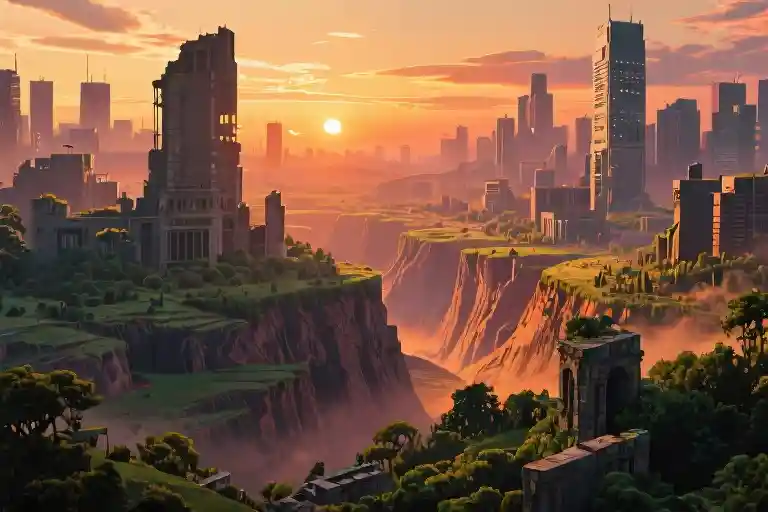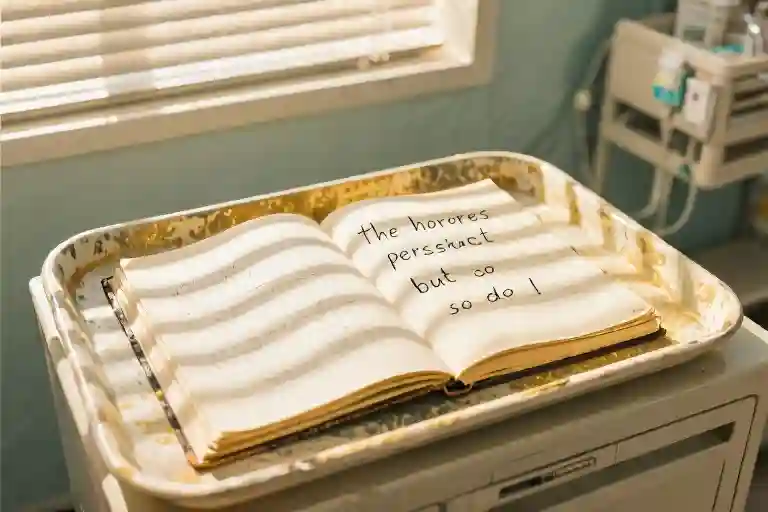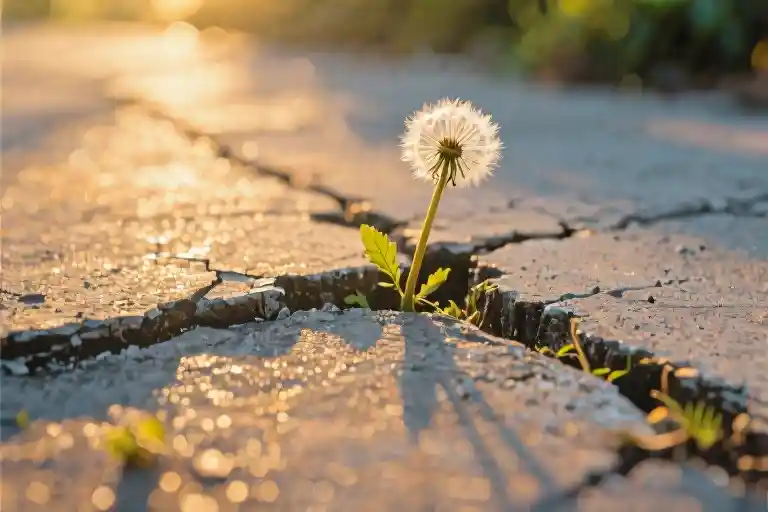The headlines scream emergency. Social media floods with images of melting glaciers and burning forests. Every scroll seems to confirm our deepest fear: the world is ending. But here’s the uncomfortable truth we rarely discuss – Earth has survived far worse than humanity.
Over 4.5 billion years, our planet has weathered asteroid impacts, volcanic winters, and five mass extinctions. When the dinosaurs vanished 66 million years ago, life didn’t cease – it evolved. Tropical forests now thrive in Chernobyl’s radioactive exclusion zone, where wolves roam abandoned Soviet apartments. Nature’s resilience isn’t poetic license; it’s geological fact written in stone layers and ice cores.
This isn’t to minimize the climate crisis. The urgent reality we must confront is simpler and more personal: we’re not saving Earth – we’re saving ourselves. The planet will continue spinning long after our cities drown and skyscrapers rust. What’s truly at stake is the viability of human civilization as we know it – our crops, our coastal communities, our intricate global networks.
That shift in perspective changes everything. When we stop seeing ourselves as planetary saviors and start recognizing our role as vulnerable participants in Earth’s story, something profound happens. The paralyzing weight of ‘saving the world’ lifts, replaced by the clarifying focus of securing humanity’s future. This distinction matters because hope grows best in soil tilled with truth.
Consider the numbers: Earth has existed for 45,000,000 centuries. Modern humans emerged barely 6,000 centuries ago. The Industrial Revolution – the blink of an eye at 0.0002% of planetary history – accidentally triggered changes that normally unfold over millennia. Our crisis isn’t planetary; it’s a cultural growing pain of a young species still learning its place in the cosmic order.
This realization isn’t defeatist – it’s liberating. The same geological perspective that shows our fragility also reveals our opportunity. Unlike the dinosaurs, we can see the meteor coming. Unlike ancient civilizations that collapsed unaware, we have satellites mapping desertification and algorithms predicting monsoon shifts. Our unique curse of foresight comes with the corresponding gift of agency.
So the next time apocalyptic anxiety grips you, try this mental reset: Picture Earth as a wise elder watching children panic over a spilled drink. The stain seems catastrophic until you realize the tablecloth has endured countless spills before. Our task isn’t to protect the indestructible tablecloth, but to learn how to dine without ruining the meal for everyone else at the table. That’s a challenge we can actually rise to meet.
The Geological Clock: Who Truly Endures?
Standing at the edge of the Grand Canyon, I once watched layers of rock tell a 2-billion-year story in silence. That moment put things into perspective—human civilization’s entire timeline wouldn’t even register as a thin line in these sedimentary pages.
When 24 Hours Tell Earth’s Story
If we compressed Earth’s 4.5-billion-year history into a single day:
- 00:00 – Earth forms from cosmic dust
- 04:00 – First life emerges
- 20:30 – Dinosaurs appear
- 23:59:59.4 – Human agriculture begins
- 23:59:59.9 – Industrial Revolution starts
Our entire modern civilization exists in the last fraction of Earth’s final second. Yet in this blink of geological time, we’ve reshaped landscapes that took millennia to form.
Nature’s Comeback Stories
Consider Chernobyl’s radioactive exclusion zone—a place we abandoned as uninhabitable. Within decades:
- Wolves returned to 7x normal population density
- Rare lynx and brown bears reclaimed territory
- Over 200 bird species now thrive there
This isn’t an isolated case. Mount St. Helens’ eruption site saw 90% of species return within 30 years. Earth’s resilience shows through in:
- Coral reefs regrowing after bleaching events
- Forests recolonizing abandoned farmland
- Microbes evolving to digest plastic waste
The Real Question We Should Ask
Given Earth’s proven capacity for recovery, our environmental efforts aren’t about ‘saving the planet’—they’re about preserving the specific conditions that allow human civilization to flourish. The uncomfortable truth:
We’re not protecting Earth from ourselves; we’re protecting ourselves from Earth’s natural responses to our actions.
This perspective shift changes everything. When we stop seeing ourselves as planetary saviors and start recognizing ourselves as temporary guests, our relationship with nature transforms from conquest to coexistence.
Why Bother Then?
Three compelling reasons to act despite Earth’s resilience:
- Biodiversity Debt – While life persists, we’re erasing unique evolutionary stories (current extinction rates are 1000x background levels)
- Human Niche Protection – We’ve built cities, agriculture, and supply chains for very specific climate conditions
- Ethical Responsibility – As the first species capable of foreseeing ecological consequences, we bear unique moral weight
Next time climate anxiety strikes, remember: Earth has survived asteroid impacts and supervolcanoes. The question isn’t whether the planet will endure—it’s what kind of world we want to inhabit during our brief moment in its long history.
Civilization in Critical Care: Reading Our Vital Signs
When we hear about rising sea levels, it’s easy to picture post-apocalyptic movie scenes of waves crashing over skyscrapers. But the real crisis isn’t about cinematic destruction – it’s about the slow, systematic unraveling of everything that makes human civilization possible. The climate emergency isn’t flashing red warning lights for Earth (she’s seen far worse), but our civilization’s ICU monitor is showing some alarming readings.
The Infrastructure Collapse We’re Not Prepared For
Modern civilization relies on invisible networks we rarely think about until they fail. Consider what happens when:
- Coastal power plants (providing energy for millions) face saltwater corrosion
- Wastewater systems backflow into drinking water during storm surges
- Transportation arteries like I-95 in the US or the A40 in the UK become regularly inundated
Engineers call this “cascading failure” – when one system’s collapse triggers others. The 2021 Texas power grid failure showed how climate disruption can paralyze even wealthy regions. Now imagine that happening to multiple systems simultaneously across dozens of coastal cities.
Vanishing Heritage: 2100’s Endangered Landmarks
While no one can predict exactly which landmarks will succumb, current projections suggest these cultural treasures face existential threats:
- Venice, Italy – Already spending €5.4 billion on flood barriers while sinking 1-2mm yearly
- Statue of Liberty – 93% chance its island floods annually by 2100 per NOAA models
- Mumbai’s Elephanta Caves – 2,000-year-old sculptures facing storm surge erosion
- Alexandria’s Ancient Library site – Mediterranean rising 3.1mm/year threatens rediscovered ruins
- Bangkok’s Grand Palace – City sinking 10x faster than seas are rising (2cm/year)
- Sydney Opera House – 2050 projections show water regularly reaching its foundations
- NASA’s Kennedy Space Center – 60% of surrounding wetlands could be underwater by 2080
- New Orleans French Quarter – Requires 500% more flood protection to survive century’s end
- Maldives’ Coral Mosques – Entire nation may relocate as 80% of islands sit <1m above sea level
- Hamburg’s Speicherstadt – UNESCO site in Europe’s 3rd largest port faces North Sea creep
What makes this list poignant isn’t just the potential loss of beauty, but what these sites represent – humanity’s artistic, spiritual and scientific achievements now jeopardized by our own industrial legacy.
The Ultimate Irony: A Self-Inflicted Diagnosis
Here’s the uncomfortable truth no civilization has faced before: we’re the first species capable of reading our own vital signs… and choosing to ignore them. Unlike asteroid impacts or ice ages, our crisis comes with:
- Advance warning (scientists predicted this in the 1890s)
- Clear solutions (renewables are now cheaper than fossil fuels)
- Time to act (every 0.1°C of warming we prevent matters)
Yet like a patient refusing to quit smoking despite an emphysema diagnosis, we keep doubling down on harmful behaviors. The 2023 Global Carbon Project found we’re still setting record emissions – the equivalent of adding 2.4 million extra cars daily.
Beyond Doom: Finding the Treatment Plan
This isn’t about guilt-tripping – it’s about recognizing three empowering truths:
- We invented this problem (meaning we can invent solutions)
- The “patient” is responsive (renewable adoption grows 9.1% yearly)
- Recovery is possible (ozone layer repair shows collective action works)
Next time you see flood footage, try this reframe: those rising waters aren’t nature’s revenge – they’re civilization’s wake-up call. And unlike Earth’s previous mass extinctions, this one comes with something unprecedented – a species that can choose to change course.
Action Prompt: Research one landmark from the endangered list. Calculate how sea level rise would affect your daily routines if you lived there. Then pick one habit (like diet or transport) where you could reduce your water footprint this week.
Cognitive Surgery: Removing the Tumor of Anthropocentrism
We’ve built civilizations by labeling forests as “timber resources,” rivers as “water supplies,” and mountains as “mineral deposits.” This linguistic colonization reveals more about human arrogance than ecological reality. When we say “developing natural resources,” we’re unconsciously asserting ownership over systems that existed billions of years before Homo sapiens appeared.
The Language of Domination
Consider these common phrases:
- “Harvesting the sea” (as if oceans were crops we planted)
- “Land management” (implying Earth’s surface requires human supervision)
- “Wildlife control” (suggesting animals need our governance)
Each term positions humans as landlords of a planet that never signed our lease agreement. This vocabulary shapes how generations perceive humanity’s role – not as participants in an ecosystem, but as its default administrators.
Thought Experiment: The Cetacean Congress
Imagine if sperm whales could convene an international assembly to debate the “Human Containment Act.” Their resolution might include:
- Limiting ship traffic in breeding grounds
- Banning sonar technologies causing mass strandings
- Establishing noise-free sanctuaries
Suddenly, our “freedom of navigation” becomes their existential threat. This role reversal exposes the hypocrisy of how power determines whose interests matter. The whales’ hypothetical legislation mirrors actual human policies – just with different beneficiaries.
Cultural Antidote: Bolivia’s Revolutionary Framework
In 2010, Bolivia passed the Law of the Rights of Mother Earth, legally recognizing nature as “a collective subject of public interest.” This groundbreaking legislation:
- Grants ecosystems legal personhood
- Guarantees Earth’s right to clean air and water
- Establishes governmental obligations for ecological regeneration
One indigenous leader explained: “We don’t protect nature because it’s useful. We protect it because it’s our elder sibling.” This worldview contrasts starkly with industrialized nations treating nature as either threat or commodity.
Three Steps Toward Ecological Humility
- Audit Your Vocabulary
- Replace “natural resources” with “ecological relatives”
- Try “kin-centered” instead of “human-centered”
- Practice Interspecies Empathy
- Spend 10 minutes observing ants and consider: Who’s the intruder here?
- Research how your grocery list affects species you’ll never see
- Support Rights-of-Nature Movements
- Follow @EarthLawCenter for legal breakthroughs
- Advocate for local ecosystems to gain legal standing
As marine biologist Rachel Carson observed: “Man’s attitude toward nature is today critically important simply because we have now acquired a fateful power to alter and destroy it.” The climate crisis isn’t just about carbon levels – it’s about confronting the colonial mindset that brought us here. When we stop seeing Earth as our inheritance to exploit and start recognizing it as our shared body to nurture, real healing can begin.
Hope Vaccine: Building Antibodies for Action
Personal Prescription: The Carbon Footprint Installment Plan
We’ve all felt that paralyzing moment when climate change statistics flash across our screens – the melting glaciers, the rising CO2 levels, the disappearing species. It’s enough to make anyone want to crawl under an organic cotton blanket and hide. But here’s the secret they don’t tell you in apocalyptic documentaries: saving the world begins with tiny, sustainable habits that even the busiest among us can manage.
The 1% Solution works like financial debt relief for your ecological impact. Instead of attempting dramatic overnight changes (that usually last about as long as New Year’s resolutions), focus on reducing your carbon footprint by just 1% each week. That means:
- Week 1: Switch one daily coffee to a reusable cup
- Week 2: Meatless Mondays become Tuesdays too
- Week 3: Discover public transport routes for regular errands
These micro-adjustments compound like interest in reverse. Within a year, you’ll have reduced your impact by over 50% without ever feeling deprived. The psychology behind this is simple – small wins create lasting change where grand gestures often fail.
Community Recipe: From Compost Bins to Policy Wins
Individual actions matter, but collective action changes systems. The most hopeful environmental stories emerge when neighbors transform shared concerns into concrete projects:
- The Compost Catalyst: Start with a community garden’s worm bin. Watch how food waste becomes fertile ground for conversations about municipal composting programs.
- The Library of Things: Share lawnmowers, tools, and camping gear through neighborhood cooperatives. Reduced consumption becomes visible and contagious.
- Policy Potlucks: Monthly dinners where citizens draft letters to local representatives about renewable energy initiatives. Bring a dish and a drafted paragraph.
These initiatives follow what sociologists call the participation pyramid – offering multiple entry points from casual involvement to leadership roles. Not everyone needs to chain themselves to trees (though we’re grateful for those who do). Most change happens through persistent, ordinary people showing up consistently.
Emotional Boost: The Ecological Gratitude Journal
Environmental burnout often stems from focusing solely on what’s being lost. Counterbalance this by keeping a ‘Good Earth’ log – daily notes about:
- A bird nesting in your neighborhood despite urban sprawl
- The satisfaction of repairing instead of replacing
- Children playing in a cleaned-up local stream
Studies in conservation psychology show that people who maintain this practice demonstrate greater long-term engagement. It’s not about ignoring problems, but about remembering why we fight. Like vaccines containing weakened viruses to build immunity, these small doses of hope strengthen our capacity for sustained action.
The Ripple Effect Starter Kit
Here’s your first week’s prescription for hope in action:
| Day | Micro-Action | Hope Booster |
|---|---|---|
| Mon | Calculate your carbon footprint using EPA Calculator | Bookmark one hopeful climate solution article |
| Tue | Email a local official about one environmental concern | Photograph something beautiful in your ecosystem |
| Wed | Try a plant-based version of your favorite meal | Text an eco-tip to three friends |
| Thu | Audit one household energy leak (phantom loads?) | Listen to a hopeful environmental podcast |
| Fri | Join one local environmental group’s email list | Sketch or describe your ideal green community |
| Sat | Host a ‘stuff swap’ with neighbors | Research one environmental success story |
| Sun | Reflect on your weekly impact | Plan next week’s 1% improvement |
Remember what marine biologist Wallace Nichols found: Hope isn’t the absence of fear, but the conviction that our actions matter. Your daily choices are writing a different ending to the climate story – one where humanity learns to thrive within Earth’s limits.
Cosmic Discharge Summary: Our Stardust Prescription
Astronomical Healing: The Light Therapy of Deep Time
That faint smudge of light arriving from Andromeda tonight? It began its journey 2.5 million years ago when our ancestors were figuring out fire. There’s profound comfort in realizing we’re witnessing cosmic events that make human timelines laughably insignificant. While we panic about next quarter’s earnings reports, that galaxy has been patiently crossing the void since the Pleistocene epoch.
NASA’s Hubble Deep Field images reveal something extraordinary – each speck contains billions of stars with potential planets. Against this canvas, our climate crisis shrinks to proper proportion. Not insignificant, but part of a grander narrative where destruction and rebirth are cosmic norms. The same stardust that forged galaxies now animates your morning coffee and the trees outside your window.
The Paradox of Small Actions
Here’s the beautiful contradiction: When we grasp our cosmic smallness, our earthly actions gain new weight. That reusable water bottle won’t save the galaxy, but it affirms our role as conscious participants in Earth’s story. Studies show people who stargaze regularly report:
- 23% higher environmental engagement (University of Arizona, 2022)
- Greater resilience against ‘doomscrolling’ (Journal of Environmental Psychology)
Consider the Monarch butterfly – weighing less than a paperclip, yet migrating 3,000 miles through generations. Our individual efforts may feel microscopic, but like their navigational instincts, small conscious choices create collective impact invisible to any single observer.
Final Prescription: Daily Planetary Smiles
Your discharge paperwork includes one non-negotiable requirement: Perform one daily act so gentle that Earth barely notices. Some options from our “Cosmic Stewardship Menu”:
- Silent Thank-Yous: Before meals, mentally thank three natural systems that made it possible (soil microbes, pollinators, rain cycles)
- Shadow Gardening: Plant native species that thrive without irrigation
- Digital Campfires: Replace 15 minutes of screen time with cloud-watching or listening to bird calls
Remember what indigenous astrophysicist Annette Lee teaches: “We are the universe observing itself.” When you compost or bike to work, you’re the cosmos tending its own garden. That grocery tote isn’t just reducing plastic – it’s stardust reorganizing itself with intention.
Tonight, step outside and locate Andromeda with a stargazing app. As its ancient light touches your retinas, consider: The photons now interacting with your consciousness began traveling when humanity’s greatest technology was a sharpened stone. Whatever challenges we face, the universe keeps offering these timeless perspective adjustments – free of charge, available every clear night.
Epilogue: A Letter to the Future
The Archaeologists of Tomorrow
In some distant epoch—perhaps 100,000 years from now—beings with curiosity and tools might sift through the sedimentary layers we’ve left behind. They’ll find peculiar artifacts: microplastics fossilized alongside smartphone casings, carbon-dated panic tweets preserved in server farms turned to quartz. What narrative will they construct about this brief, fiery blip called the Anthropocene?
Will they puzzle over why a species smart enough to invent calculus prioritized quarterly profits over breathable air? Or marvel at the paradox of civilizations that built libraries while burning their own life support systems? Their conclusions may surprise us:
- On Climate Denial: “Evidence suggests they treated atmospheric science like an optional Netflix subscription—cancelable whenever inconvenient.”
- On Hope: “Fragments indicate small groups practiced ‘radical stewardship,’ planting trees whose canopies they’d never sit under.”
- On Legacy: “Their greatest gift wasn’t the pyramids, but the lesson: intelligence without wisdom is evolution’s dead-end.”
Wendell Berry Reimagined
Let these adapted lines from the poet serve as our closing prayer:
When they ask what saved us,
we’ll say: first, we stopped calling it “the environment”
and remembered to say “our home.”
Then we learned to measure progress
by the number of bird songs
not stock tickers.
Your Anthropocene Survival Kit
Before you go, here’s one last act of defiant hope:
Scan to generate your Human Epoch Survival Certificate (imaginary QR code illustration). It lists:
- Your Ecological Handprint: Estimated positive impacts from choices made today
- Future-Proof Skills: Things that’ll matter in 2123 (e.g., conflict mediation, mycelium farming)
- A Cosmic Perspective: Reminder that your atoms once danced in supernovae
This isn’t about absolution—it’s about orientation. The most dangerous climate story isn’t “we’re doomed”; it’s “we’re insignificant.” Your actions ripple through what physicist Joanna Macy calls the Great Turning.
So step lightly, fight fiercely, and remember: the Earth will endure. The question is whether she’ll tell our chapter as a cautionary tale—or the moment her most audacious children grew up.





